Art Reviews
I Think We Should Just be Friends - Colin Self and Jim Moir (aka. Vic Reeves)
Gallery in The Lanes
07/03/18
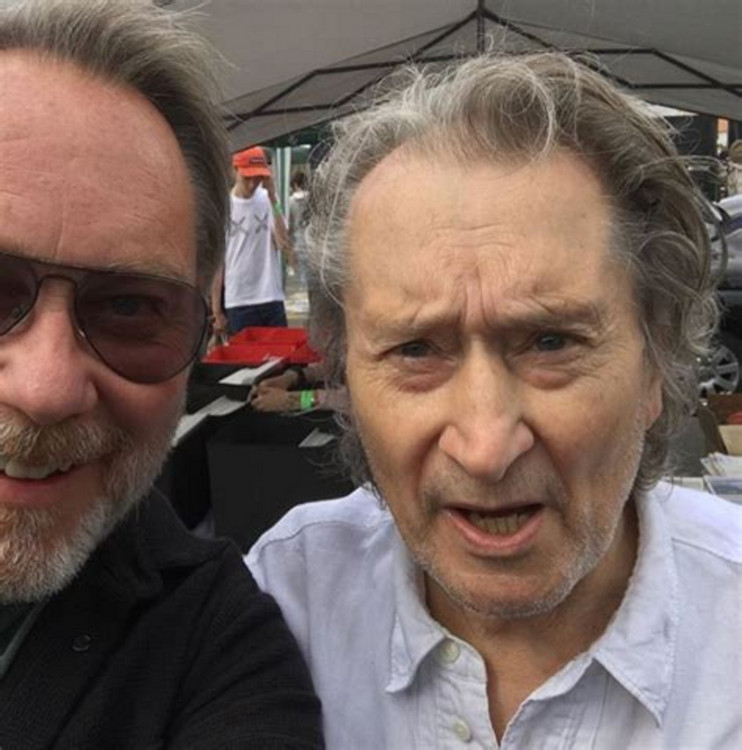
Across the flat planes of Norfolk countryside, through vast swathes of rurality and heavy accents, lies a land that celebrities rarely tread. This, of course, is our fair city of Norwich – a little island within a sea of calm countryside, often denigrated for its lack of external accessibility. Personally, I consider this as a positive thing, as it keeps out the riff-raff. Yet, we cannot suffice socially if our only notable visitor (post-1805) is Stephen Fry. Luckily, in a small, back-alley exhibition, this need has been sated.
Fairhurst Gallery is currently hosting an eponymous comedian’s recent creative output and, as far as I am concerned, the musings of his Norfolk-born mate. However, I get ahead of myself, as I haven’t even outlined the purpose for this show. Jim Moir – or Vic Reeves, as you will probably know him – has been creating what can only be described as ‘art’ for quite a while now. These expressions are eclectic and remarkably expressionist, often using traditional mediums in a somewhat challenging way. Colin Self is also there, making hot dogs out of glasses cases.
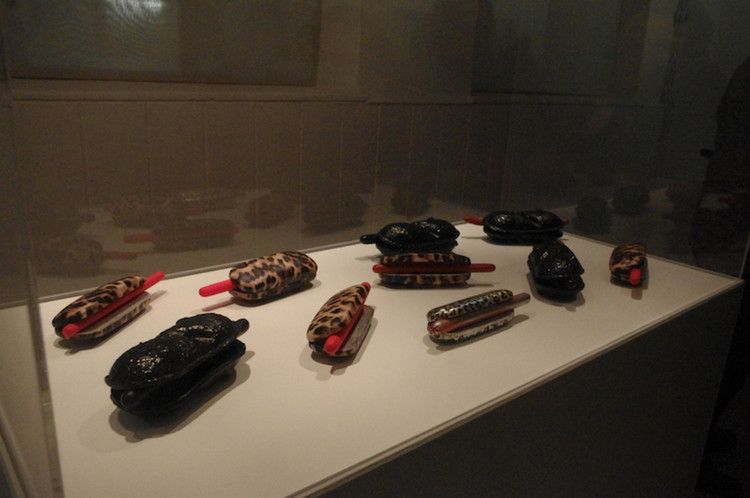
As far as I can tell, these two gentlemen are friends and, as all friends do, they have decided to set up a contemporary art exhibition together. I remember my first bromance, in which Michael and I would regularly go skip stones across the Broads – before painting that stone in a minimalist fashion and renting out Stew Gallery.
Those were the days – but you don’t want to hear about that.
Instead, I will be completely honest with you; I expected this show to be a bit of a damp squib. After looking at Moir’s work on his website, I felt very little toward his previous output. In the case of Colin Self, it is impossible to avoid knowledge of his work if you are an artsy person in Norfolk. This is probably due to how he studied at Wymondham College (as he was born in Rackheath) and even vague artistic success is celebrated here. Maybe the forceful pushing of Self as a valuable local artist had instantly soured my opinion, but I could never really engage with his work. So, I wasn’t the most positive critic in the world, as I stumbled through thick snow in to the show’s private view.
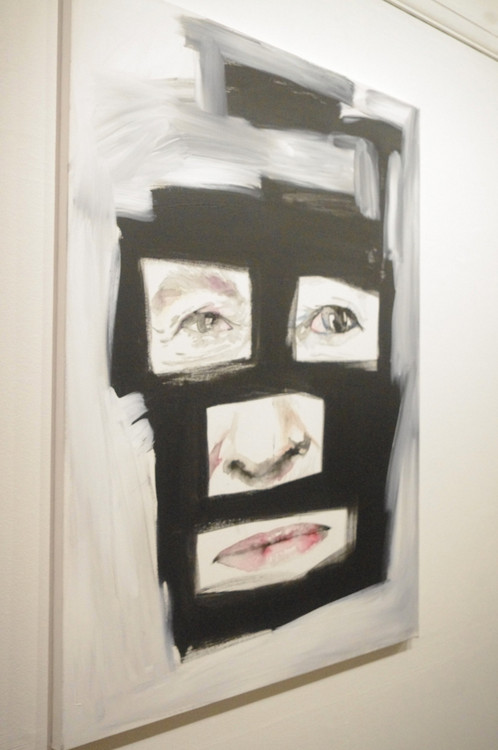
Imagine my shock as I suddenly found myself stood aghast, staring at a selection of Jim Moir’s work with a genuine feeling of adoration. There is something intrinsically human to his art; naivety, comedy, humbleness, sadness and glee all intertwine between paintings that feel almost chronological. As one’s eyes traverse the sometimes-garish colours upon the walls, the overwhelming feeling is of a narrative with an unreliable narrator, or a hidden personal process that may never be discovered. While they are not the prettiest of items, their imperfections and surrealist compositions make each piece feel counterintuitively both dramatic and understated. Take, for example, a painting of a giant crab fighting a flying snake, which is then placed near a messy self-portrait of the comedian, gurning shamelessly. It shouldn’t work, but it really, really does.
In previous articles, I have made statements surrounding the validity of art if it is grounded within reality. If that is achieved, it impacts the audience more, as it is not just an artificial product. This, theoretically, can be extended to personal reality also – as art can be something just for the creator. ‘I paint because, if I don’t, I will explode,’ or something like that.
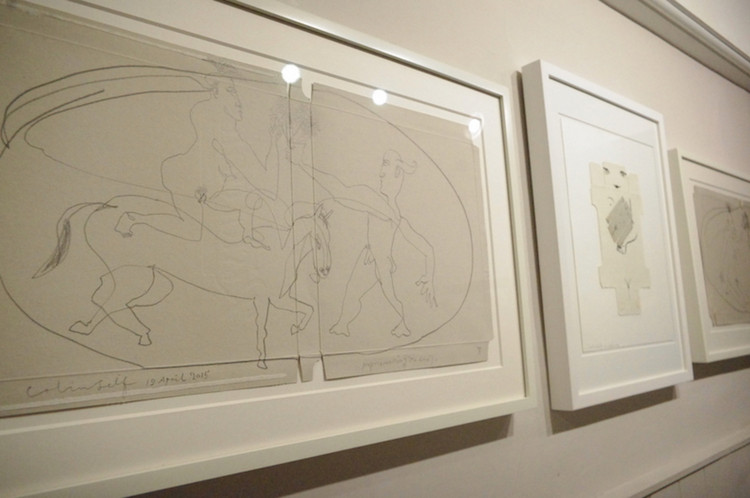
My thought is that Jim’s creative process has done more for him than it ever will for anyone else and, while that ensures its limited range, it is one of the truest forms of artistic expression. When thinking of this, my mind turned to Henry Darger (1892-1973) and what was discovered upon his death. This man, who is now widely recognised as one of the most intriguing artists to have lived, had a troubled life of hardship and poverty. When he passed away (and his neighbours began clearing out his apartment) a massive hoard of artwork was discovered. He had written extensively, including a fictional novel titled ‘The Story of the Vivian Girls, in What is Known as the Realms of the Unreal, of the Glandeco-Angelinian War Storm Caused by the Child Slave Rebellion’. Alongside this were a multitude of paintings, depicting the scenes detailed in the book and, naturally, all were unprecedented insights in to the mind of Darger, created by the artist, for nobody else other than himself. If that sounds interesting, I would recommend having a look in to him. There are even a few very entertaining YouTube videos documenting his life.
While this may seem to be a tangent, it is not at all, as I see Moir’s work as incredibly similar. It is a natural process for an artist who is not necessarily making work for anyone other than himself. Whether that be sitting down with a glass of wine in the evening to have a bit of a doodle or spending hours upon hours painstakingly painting, it is about the personal act of expression. Really, his work does not need to be exhibited, as its purpose has already been fulfilled. In fact, what would the case be if Jim Moir had not created the infamous Vic Reeves? What if Moir was not a celebrity, but an ordinary man? In a few decades, would neighbours stumble upon another hoard of artworks?
Regrettably, the direct opposite of this can be found on (ironically) the opposite side of the room. Self’s work, while as eclectic as Moir’s, does not feel interwoven or personal. It has the semblance of a series of independent works; all disconnected, not informing each other in the slightest. A lump of chrome in a glass case, some random collages and, of course, the aforementioned hotdogs, make up pretty much the entirety of Self’s exhibition input. While, when looking at Moir I saw genuineness and an understated humanity, all I see here is a man pretending. It is like an actor playing the role of an artist, inserting items in to a white cube that tick the cliché boxes of contemporary art. What is worse (and is made more painful by the presence of Vic Reeves) is the attempts at humour. Once again, it is someone playing the role of a specific field – in this case, comedy - with very little effect. The work is arguably tongue-in-cheek – only, in this case, the tongue has been severed and the cheek has a hole in it.
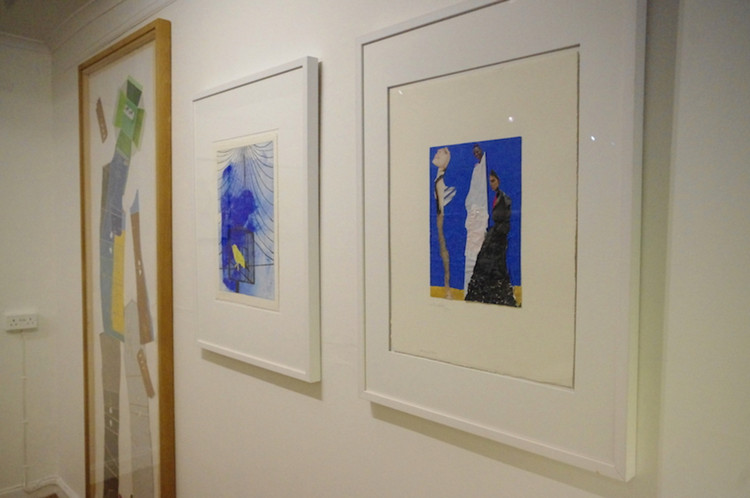
There is a definite split in the main exhibition space, with Moir on the left and Self on the right. This only helps to highlight the vast chasm between both artist’s initial impetuses and the subsequent audience impact. One is engaging and subtle, the other is brash and empty.
Yet, despite my genuine dislike of precisely half of the show, I would recommend everyone to go see it. Literally everyone.
Moir is the saviour here and, as his work screams of individual humanity, it is relatively universal in its appeal. Due to this fact, I can even garner a positive notion from Self, as the presence of his work helps to highlight how genuine his friend’s creations are. It is art as it should be, juxtaposed against everything that high art currently is. The gallery itself is a lovely setting too, which (if you haven’t already been) is worth an explore for its simple quaintness alone. Also, your children might find Self’s infantile humour somewhat amusing.
A log fire, surprisingly endearing artwork and some unfunny hotdogs – what more could you want?
I Think We Should Just be Friends is open at Fairhurst Gallery 1st – 31st March
Visit http://gallery.fairhurstgallery.co.uk/current-exhibition/think-just-friends for more information.